What are the Major Types of Content Marketing?

If you're an entrepreneur, small business owner, or marketing professional at any level, chances are you have a decent understanding of what content marketing is. Content marketing is essentially a way to create content that educates, entertains, and satisfies potential customers. The type of content you ultimately decide to create with content marketing will be based on your audience, goals, and cherished beliefs. This article will cover all aspects and major types of content marketing.
What is Content Marketing?
Content marketing is an innovative marketing strategy that uses the digital space to create, publish and distribute content to attract, engage and convert prospects into leads. It's an organic process of regularly posting valuable, engaging, and relevant content.
The goal of your content marketing strategy is lead generation. The more compelling your offer (content), the more people will be willing to take the next step with you as your prospect/lead. The process, however, isn't always easy. Content marketing requires creating relevant content for your audience and offering value.
Purpose of content marketing
Content marketing aims to attract more customers to your brand by creating and distributing content. The type of content can vary, but there are three major types: thought leadership, product placements, and entertainment.
Thought leadership is educational material that gives expertise and knowledge on a topic or industry. It often includes resources with detailed instructions on using them (blog posts). You can think of it as a how-to manual on your topic. It can help establish an expert reputation and expose their products or services to new audiences for companies.
Product placements are advertisements found in videos, pictures, articles, and other media. The goal is to incorporate the brand within the content without disrupting the flow for viewers. The more subtle these placements are, the more success you will have in making sales.
Entertainment is humor that talks about topics relevant to your brand (memes). This content is for entertainment, including information that helps you build your brand. For example, you can create a funny video about your product and show how to use it.
Pros & Cons of content marketing
There are several different ways to achieve results with content marketing, and all of them have pros and cons:
Pros
- Brand awareness: Many companies struggle with brand awareness. With content marketing, you can develop your brand without spending much money.
- Low cost: You can implement these strategies without a large budget or hiring a professional marketing team.
- Reach broad audiences: Content can reach people who aren't your current customers or even sometimes your competitors' customers. Marketing is no longer limited to just those on your mailing list or browsing the Internet at midnight.
- Build user trust: By publishing high-quality, informative content, you can give potential customers reasons to trust your brand.
- Build trust with search engines: Search engines will see that and reward you since your content is relevant to your brand.
- Lower bounce rate: People will stay on your website longer by reading interesting, relevant posts.
Cons
- Time-consuming: Creating good content takes a lot of time, even if you have staff writers on your team.
- Analyzing: You need to collect and analyze data about your audience and what type of content they want.
- Paying for ads: If you want to get "real" results, you need to pay for advertisement on social media sites and Google, as well as pay for other marketing activities like trade shows, billboards, etc.
- Not scalable: Each marketing strategy on its own offers little value. It would help if you combined them with other methods to achieve significant results, which can be costly.
- Not formal: With content marketing, you're not researching or planning to find the best way to promote your business.
- Not measurable: Although you can measure metrics like conversion rate, low bounce rate, and time on site, you can't talk about those numbers in an article or video like you can with advertising and paid social media posts.
What are the Major Types of Content Marketing?
Content marketing is a broad term used across many different industries. But what are the significant types of content marketing? Depending on your industry, you could use verticals like education and information products.
Economic content such as financial news articles and stock market analysis; lifestyle content such as fashion magazines and cable TV shows; or even more specific subjects like cooking recipes, travel journals, or car model reviews.
Types of Content Marketing
The most common type of content marketing is a knowledge product. In content marketing, this usually means a non-fiction book or an ebook. But other forms of information products like software and guides can also be used as part of content marketing.
1. Book Marketing
The primary success factors are a strong title and an appropriate topic. A book with no apparent reveal or hook is likely to be difficult for readers to take hold of, and therefore the first step in marketing a book is to create something that will command attention. This can be achieved by giving your title the potential to become a search term, creating an easily digestible teaser, or using other techniques like making a good press release.
2. Podcasting
Several free podcasting platforms are available to anyone, including Podomatic and Ecamm Network. In recent years podcasting has become a helpful way to act as an authority figure in your industry or build trust with potential customers by giving out free information. Some people have even gone so far as to start their own podcast production company or podcast agency.
3. E-Commerce Products
E-commerce is another way to integrate your product with content marketing. If you already have a product that you are selling, it is possible to add bonus material such as ebooks or audio footage. You can also create content that gives inspiration to people interested in your market and lead them to your website.
4. Self-Publishing
Self-publishing means producing and distributing your books directly through services like KDP (Kindle Direct Publishing) and Smashwords. This can be advantageous, especially when your main product is a book.
The main disadvantage of self-publishing is that you may not have the marketing budget of traditionally published books or the time to promote your book and your website. This can be difficult for smaller publishers or those with limited resources.
5. Blogging
A blog is a valuable way to continue sharing your knowledge after publication of a book. It can also help you promote your website or give potential customers insight into what you have to offer with videos and audio files to help them decide whether they want to engage with your brand further.
6. E-Newsletters
An e-newsletter or email newsletter effectively makes it easy for potential customers to engage with your brand outside of social media platforms. By signing up for an e-newsletter, someone can receive updates directly in their inbox and be immediately informed of new products, deals, and information that you may wish to share with them.
7. Podcasts
Podcasts are a good way for brands to share audio information that people can listen to at their leisure on the commute or when working out at the gym.
8. Educational Pricing
An education pricing model is a strategy used by some companies to provide better value for money and make their products more attractive to people. After reading the book, if anyone has any questions, they can contact a teacher who will offer their answers to any queries.
The main benefits of an education pricing model are that it makes the book much more readable and exciting. It can also encourage repeat purchases as individuals feel that they are getting a better deal because of their investment in the content.
9. Multi-Pack Specials
Some companies use Multi-pack specials for packaging their books with complementary information. This can be very advantageous, especially when you have more than one product that you want customers to purchase.
10. Subscription Services
A subscription service is content marketing where consumers pay for regular content updates or other services like software and videos.
11. Product Reviews
Product reviews are also a form of content marketing that has been popular since the early days of the Internet. Product reviews are not just about advertising; they also give impartial information. As well as professional or successful companies reviewing products, anyone can provide their assessment and allow other people to make an informed decision before they buy.
12. Information Marketplaces
If you have a lot of content, it can be more beneficial to share it on an information marketplace instead of using traditional content marketing strategies like blogging and podcasting. Information marketplaces like Contently and Outbrain are helpful ways of promoting content because they can be used to promote any brand or website.
13. Social Media Communities
Social media communities can be a helpful way to create a community around your brand and your material which you can then use to share new content through the different channels that it is posted on. As the audience grows, you will have a larger group of people interested in your material, which means they will be more likely to engage with your brand.
14. Press Releases
Press releases are beneficial for getting attention for a new book or product. You can promote your content across a broad audience by sending your press release to national news agencies like the BBC and local news services based in places you want to do business with. One of the best ways to write a good press release is by keeping it simple and focusing on writing in an engaging style.
15. Book Trailers
Book trailers are a type of content marketing that is becoming more popular. They generally consist of a video that gives the reader an idea of what the book will be about in terms of its content and style.
16. Media Advertising
Media advertising can be an expensive way for brands to market their products, but it is also one of the most effective ways to get attention for your product or service. The main disadvantage is that it can be costly compared to other types of online advertising.
17. Social Media Advertising
Social media advertising is a new form of content marketing that has grown in popularity. The main advantage is that it is very affordable and gives you the potential to reach a large audience on affordable platforms like Facebook and Twitter.
Things to Know about Content Marketing?
Here are some essential things you should know:
- It's a Marketing Strategy
You're marketing online, not just creating content. You need to create a content strategy, or you'll create an ineffective marketing plan.
- Your Content Strategy Should Include a Micro-Strategy for Every Micro-Audience
Asking 'what's in it for them?' is not enough. Do you need to ask 'how do I make someone want to buy from me? You're unlikely to be able to create content that will appeal to every individual or agency. Hence, you want to ensure that your content strategy is suitable for each micro-target audience.
- Having a Process is Key
If you're going to have someone else create content for you, your team should have a process established to develop a consistent content stream. With this process, you want to be sure that your team understands what content you're hoping to achieve. Your team should also utilize resources like templates, eBooks, etc., to make the process run smoothly and efficiently.
- Having a Staff is Essential
Without having adequate staff to create content, you will be unable to meet your content creation deadlines. Ideally, you want to provide your team with the tools they need to make the correct type of content for your specific audience. With this, you'll determine what kind of content they lack and bring them up to speed with their skills.
- Don't Overlook Copywriting
Don't have a strategy that excludes copywriting. You should have some content that can stand alone, but you also want to incorporate promotional content in your plan so that your company can receive more exposure. For example, you may need to create an informational email or a blog post with a particular product, service, or brand.
Do you feel like you are struggling with putting "strategy" and "business growth concepts" in place that make a difference? Doing it all is overwhelming! Let’s have a honest discussion about your business and see if the Power of 10 can help you. Click “HERE” to have a great conversation with our team today.
Written and Published By The Strategic Advisor Board Team
C. 2017-2021 Strategic Advisor Board / M&C All Rights Reserved
www.strategicadvisorboard.com / info@strategicadvisorboard.com











